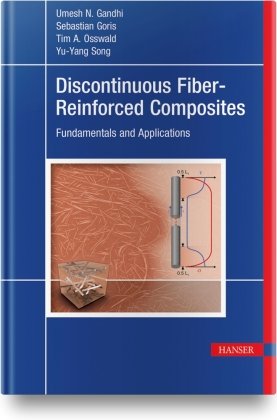
Discontinuous Fiber Reinforced Composites - Fundamentals and Applications
| Verlag | Hanser Fachbuchverlag |
| Auflage | 2020 |
| Seiten | 480 |
| Format | 17,3 x 24,5 x 3,1 cm |
| Gewicht | 1208 g |
| Artikeltyp | Englisches Buch |
| ISBN-10 | 1569906947 |
| EAN | 9781569906941 |
| Bestell-Nr | 56990694UA |
Rezension:
"Die Ergebnisse jahrelanger Zusammenarbeit zwischen Industrie und Wissenschaft auf diesem Gebiet werden umfassend und leicht verständlich dargestellt. Das Buch bietet einen praktischen Ansatz zur erfolgreichen Strukturanalyse von diskontinuierlich faserverstärkten Kunststoffen. Dazu gehören die Prozesssimulation, die Bestimmung der Mikrostruktur sowie die Abschätzung der Materialeigenschaften im Bauteil auf der Grundlage des Faserzustands sowie der Umgebungsbedingungen." Plasticker.de, 11.05.2020
There are many books on composite material analysis, but most cover mainly continuous fiber materials, rather than those filled with discontinuous fibers, which are particularly attractive for large-volume and low-cost applications. This book provides the theoretical and practical background to design and use discontinuous fiber-reinforced polymer materials, with an emphasis on structural parts for the automotive industry. Moreover, the product of years of collaborative work between industry and academia is presented in an easy-to-use, comprehensive manner.
The information provided makes it possible for someone with an engineering background to understand the micromechanics of discontinuous fiber-reinforced materials and, hence, analyze the structural performance of components designed with such materials. The book employs a practical approach to cover the key, unique capabilities that are critical for a successful structural analysis of discontinuous fiber-reinforced polym er structures:
-Process simulation to estimate the condition of fibers in the finished parts, i.e., fiber length, orientation, and concentration
-Capability to measure micro structure, i.e., fiber length distribution, fiber orientation tensors, and fiber concentration, etc.
-Estimation of material properties in the part based on fiber condition, as well as environmental conditions such as temperature
A broad range of areas is included, such as joining and assembly.
